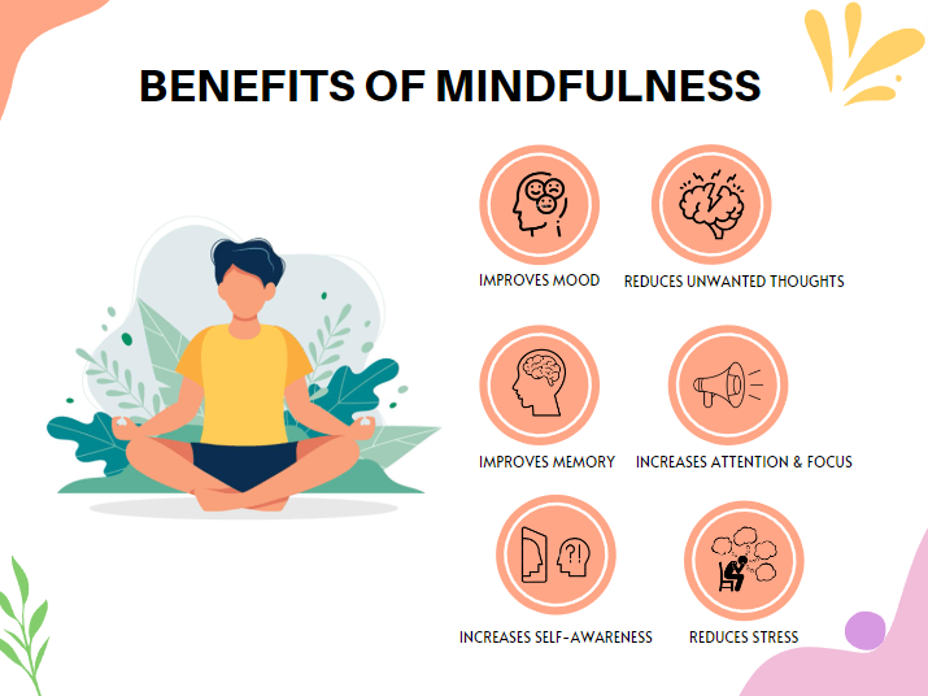
What is mindfulness?
Mindfulness is the ability to be fully present and aware of one’s physical, mental, and emotional condition in a specific moment with ourselves and our environment. It is non- reactive experience where you accept and pay attention to your thoughts and feelings without judging them. Mindfulness encompasses a range of different contemplative practices which originated from Buddhist traditions and have been adapted by Western society and become mainstream. Practicing mindfulness can help you to better control your thoughts, rather than be controlled by them.
Pillars of mindfulness
These are the seven pillars of mindfulness that encompass what we should be striving towards when practising mindfulness. If you would like to know more about these principles read more here.
- Non-judging
- Patience
- Beginner’s mind
- Trust
- Non-striving
- Acceptance
- Letting go
How can practicing mindfulness improve your mental health and wellbeing?

How to practice mindfulness?
- Notice how thoughts come and go in your mind. You may learn that they don’t have to define who you are, or your experience of the world, and that you can let go of them.
- Notice what your body is telling you. For example, you might feel tension or anxiety in your body, such as a fast heartbeat, tense muscles or shallow breathing.
- Create space between you and your thoughts. With this space, you can reflect on the situation and react more calmly.
- Name thoughts and feelings – To develop an awareness of thoughts and feelings, some people find it helpful to silently name them: “Here’s the thought that I might fail that exam”. Or, “This is anxiety”.
